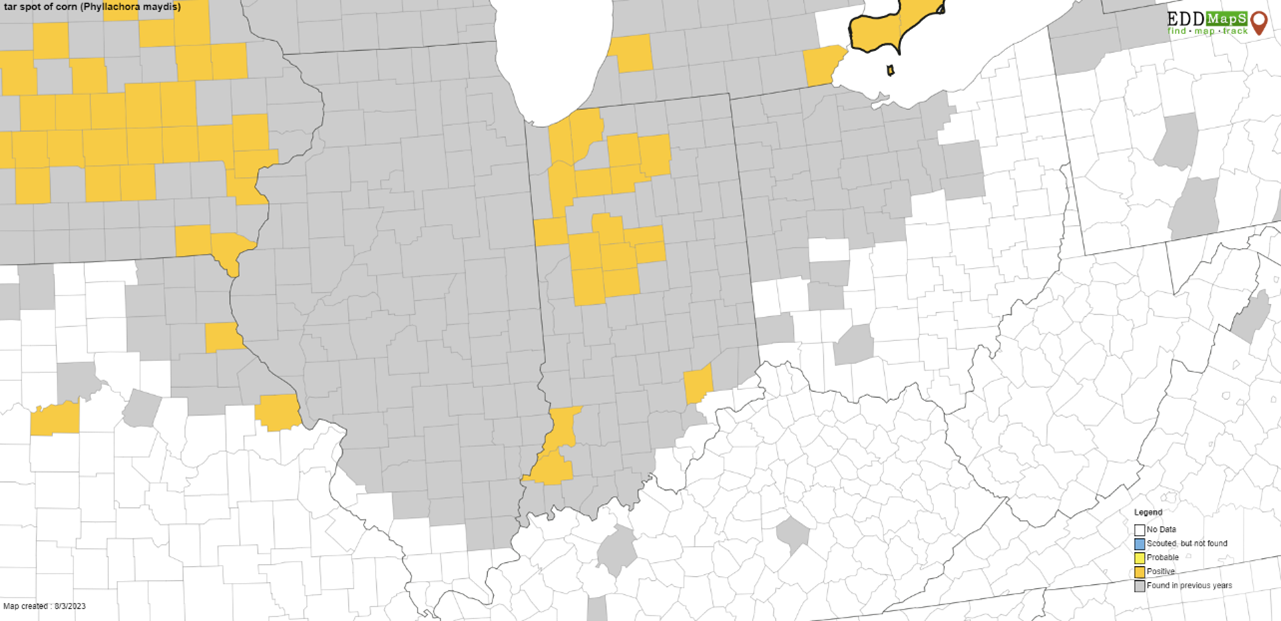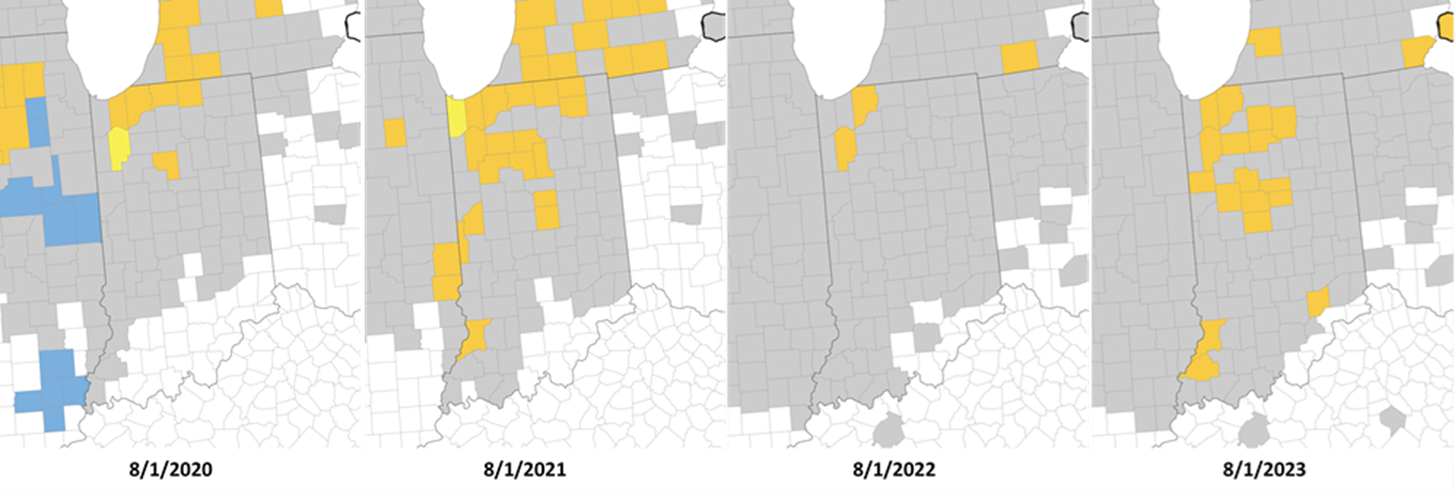Tar Spot – We continue to confirm counties with active tar spot. Eighteen counties have been confirmed as of Aug 3, 2023. These counties all had a previous history: Porter, LaPorte, Jasper, Pulaski, Fulton, Marshall, Kosciusko, Benton, Tippecanoe, Carroll, Howard, Tipton, Clinton, Montgomery, Knox, Gibson, and Jennings (Figure 1). Gray colored counties on the map are those we have found tar spot in previous years. In some fields tar spot is beginning to move up in the canopy and increased severity on the leaves. Please keep scouting your fields and make and informed decision. Our research has found that a well-timed fungicide application up to R3 will help reduced disease and protect yield.

Figure 1. Map of tar spot counties. Gray = found previously, Yellow = found in current 2023 season. Map updated on Aug 3, 2023.
We went back and pulled the maps from August 1 2020, 2021, 2022 and 2023 to compare the different seasons and where we were in Indiana in regards to finding tar spot. See figure 2. As 2023 is progressing we are currently finding more fields with tar spot at this point in the season then we had last year and it looks similar to 2021. If you have had issues with tar spot on your farm in the past it is time to get really keep an eye out to see if the disease has started to make an informed decision if a fungicide may be needed.
In addtion to tar spot, I have also seen other common diseases including gray leaf spot, northern corn leaf blight and some common rust. For more information on tar spot management please refer to my previous articles and see links below.
Please help us track foliar disease in Indiana for both corn and soybean. I am particularly interested in those counties we have yet to scout or receive a sample. Even if your county is yellow, I am also interested in learning if you have tar spot or southern rust on your farm and what you might be seeing. Please feel free to contact me (dtelenko@purdue.edu) or the PPDL (ppdl-samples@purdue.edu) with any major disease issues you may have this season.
Resources:
- Fungicide efficacy table for corn diseases: https://cropprotectionnetwork.org/publications/fungicide-efficacy-for-control-of-corn-diseases
- Fungicide efficacy table for soybean foliar diseases: https://cropprotectionnetwork.org/publications/fungicide-efficacy-for-control-of-soybean-foliar-diseases
- Purdue Plant Pest Diagnostic Lab https://ag.purdue.edu/department/btny/ppdl/
- Purdue Field Crop Pathology Website with current maps https://indianafieldcroppathology.com/



